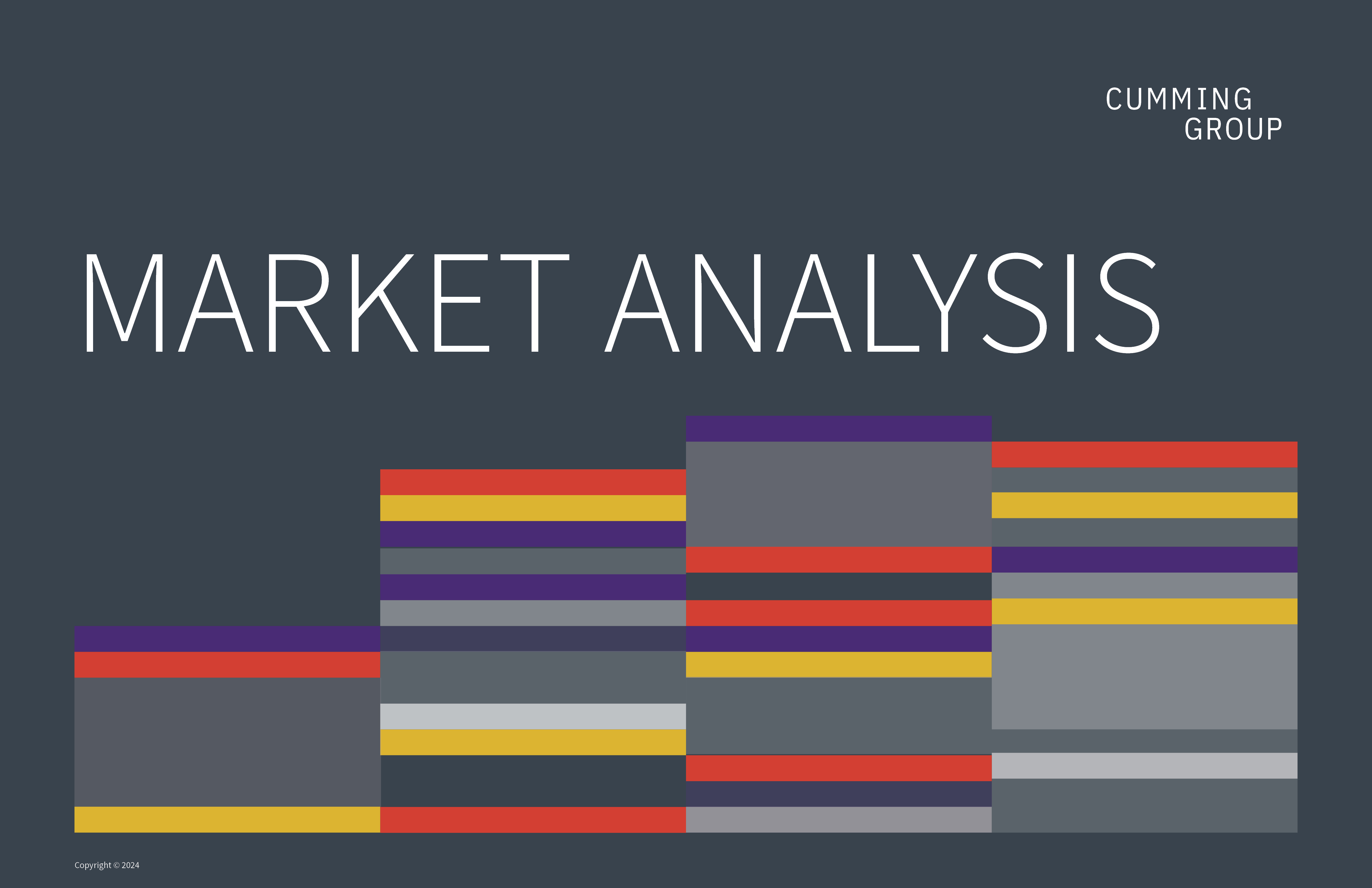U.S. Construction Market Overview
The construction industry managed to grow by a little over 1% in 2023. This is almost entirely due to inflation rather than an increase in overall volume. When controlling for inflation, spending declined by a little over 1%.
In addition to ongoing inflation, the industry is grappling with volatility in material prices and increasing labor costs. Workers who left the industry in 2020 have yet to be replaced, and this has pushed labor costs up across the board. Moreover, tighter monetary policy and stricter lending standards are also impacting construction activity. Looking further into 2024, an influx of federal money is expected to boost construction in manufacturing, transportation, and energy infrastructure. Confidence in the market therefore remains high, with Associated Builders and Contractors expecting an increase in profit margins and staffing levels, particularly in the first half of the year.
For the residential sector, performance during 2024 depends on broader economics. From January to August 2023, total housing starts decreased by 9% compared to the same period the previous year largely due to a rise in interest rates and inflation. According to the Bureau of Labor Statistics, housing prices in US cities rose to 5.7% year-over-year in August 2023 and were a significant contributor to core consumer price inflation. Nonresidential spending, on the other hand, is likely to continue to grow steadily as federal funds flow into the construction of semiconductor fabrication plants, biotechnology facilities, EV battery factories, and other clean energy projects in 2024, and as several high-value projects break ground. Manufacturing construction spending had the largest annual increase in construction spending of 65.5% as of August 2023. Manufacturing construction is likely to grow further in 2024, buoyed by funding of more than US$52 billion from the Creating Helpful Incentives to Produce Semiconductors (CHIPS) Act, and close to US$152 billion from the Inflation Reduction Act (IRA) and Infrastructure Investment and Jobs Act (IIJA). The IIJA allocates around $60 billion for transportation, broadband, climate, and energy projects. We expect this to impact construction spending through 2024. The IRA has also created opportunities for the construction industry through tax credits and incentives for the expansion of clean energy infrastructure, such as renewable energy generation facilities and electric transmission facilities, with various funding opportunities available through late 2024.
Despite the flow of public funds, market uncertainty will likely play a large role in nonresidential construction in the coming year. Project deliveries may be delayed due to financing challenges and disruptions in the supply chain. Margins could diminish as the costs of materials and labor fluctuate in response to economic uncertainty. Financing could become more expensive if the Federal Reserve raises interest rates, and this could impact the feasibility of certain projects. Finally, backlogs—which can help firms sustain operations through economic uncertainties—may be reduced if ambiguity in timelines and financing of new projects persist in the coming year. As of last August, backlogs in nonresidential construction had increased to 9.2 months and are expected to sustain the market going into next year.
– SIGN UP –
Receive a full version of our
construction Market Analysis
each quarter.








